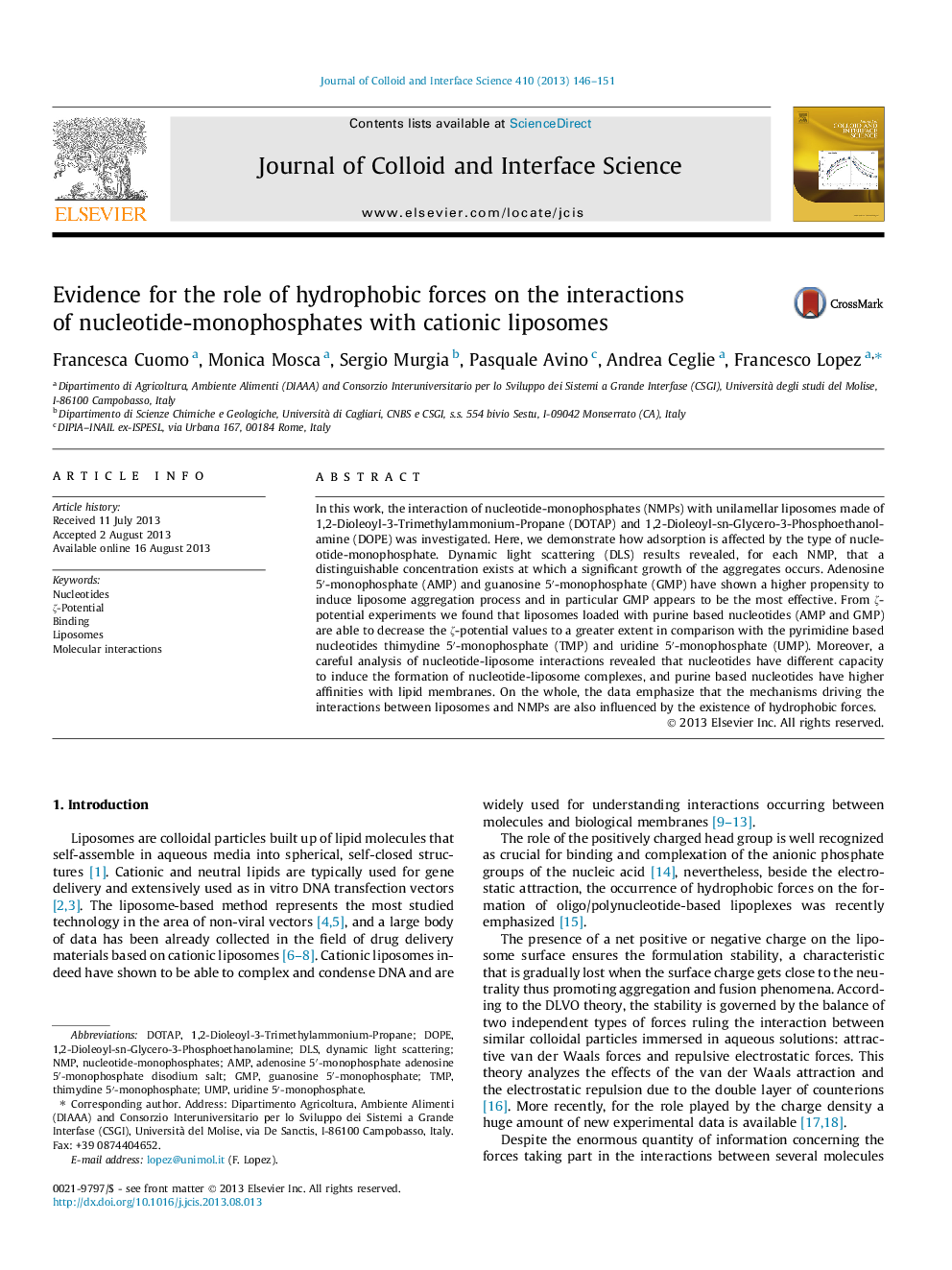| Article ID | Journal | Published Year | Pages | File Type |
|---|---|---|---|---|
| 607530 | Journal of Colloid and Interface Science | 2013 | 6 Pages |
•Hydrophobic forces are shown to affect cationic liposome/mononucleotide association.•Purine nucleotides have high propensity to induce complex formation.•The highest extent of liposome aggregation is induced by guanosine 5′-monophosphate.
In this work, the interaction of nucleotide-monophosphates (NMPs) with unilamellar liposomes made of 1,2-Dioleoyl-3-Trimethylammonium-Propane (DOTAP) and 1,2-Dioleoyl-sn-Glycero-3-Phosphoethanolamine (DOPE) was investigated. Here, we demonstrate how adsorption is affected by the type of nucleotide-monophosphate. Dynamic light scattering (DLS) results revealed, for each NMP, that a distinguishable concentration exists at which a significant growth of the aggregates occurs. Adenosine 5′-monophosphate (AMP) and guanosine 5′-monophosphate (GMP) have shown a higher propensity to induce liposome aggregation process and in particular GMP appears to be the most effective. From ζ-potential experiments we found that liposomes loaded with purine based nucleotides (AMP and GMP) are able to decrease the ζ-potential values to a greater extent in comparison with the pyrimidine based nucleotides thimydine 5′-monophosphate (TMP) and uridine 5′-monophosphate (UMP). Moreover, a careful analysis of nucleotide-liposome interactions revealed that nucleotides have different capacity to induce the formation of nucleotide-liposome complexes, and purine based nucleotides have higher affinities with lipid membranes. On the whole, the data emphasize that the mechanisms driving the interactions between liposomes and NMPs are also influenced by the existence of hydrophobic forces.
Graphical abstractFigure optionsDownload full-size imageDownload high-quality image (128 K)Download as PowerPoint slide
